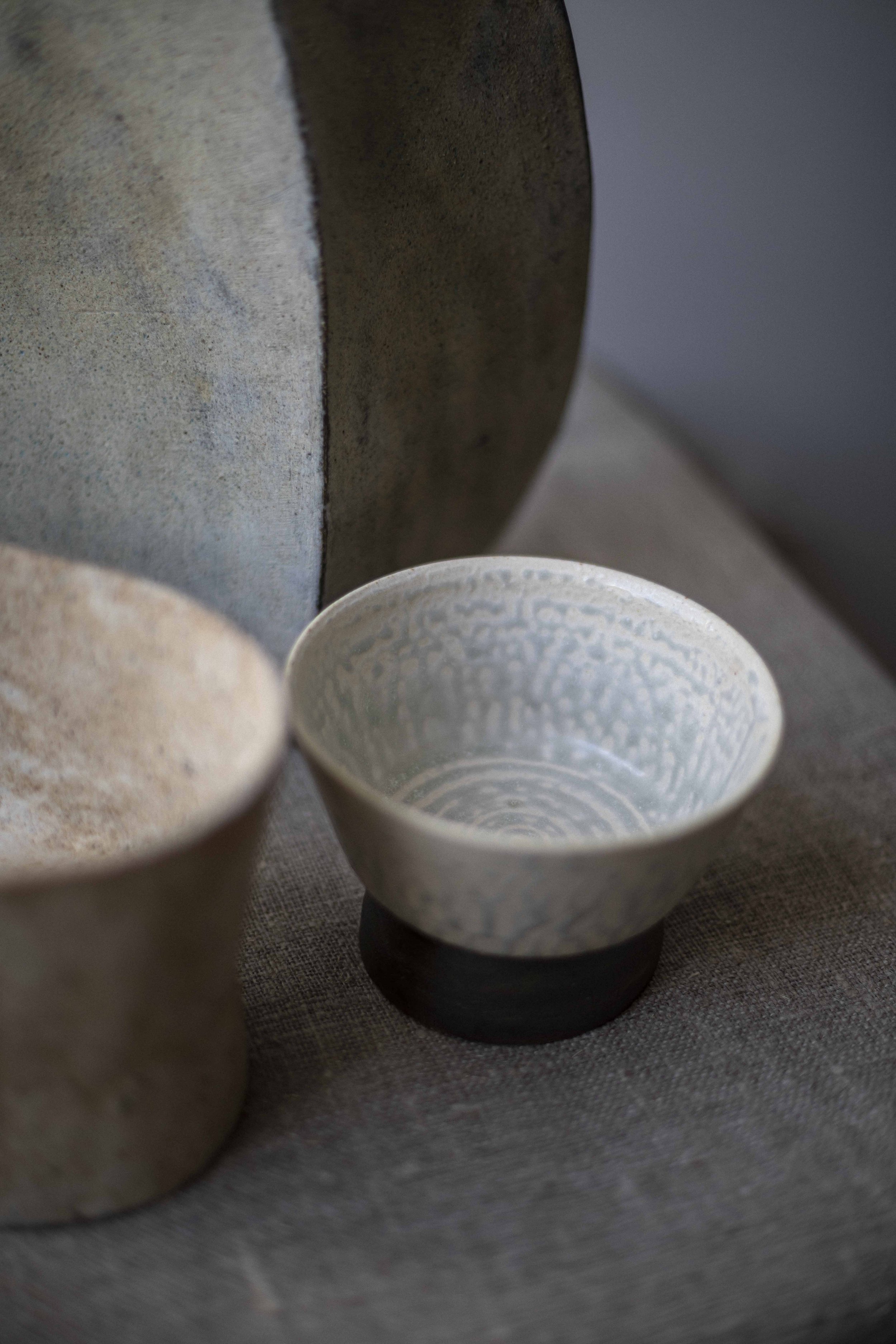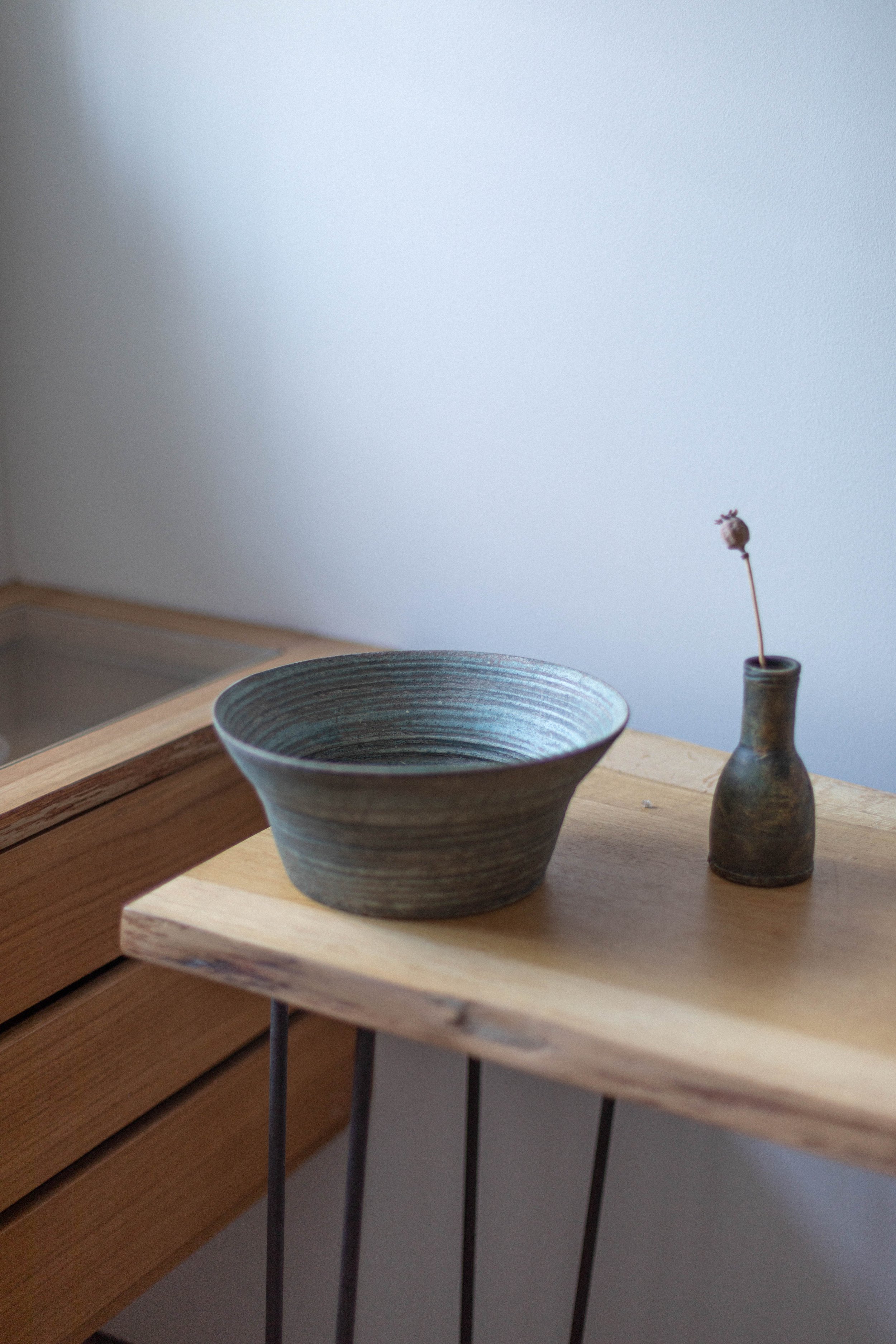
A Solo Exhibition with renowned studio potter
Paul Philp
“I first came across Paul Philp’s vessels when visiting a collector’s home. Philp’s vessels stood out in the collection; I immediately fell in love with them. The variety of forms and combination of glazes was most unusual. Since that encounter, I have been thinking about how wonderful it would be to exhibit Philp’s work at the Gallery. Paul leads a very discreet life with no website; it was not easy to find him. Kindly the collector made an introduction so that I could visit his beautiful studio and atmospheric home. We are so delighted to share our passion for his work in a new exhibition at Flow Gallery.” — Yvonna Demczynska
“I AM SEEKING A RESTRAINED, CLASSICAL FEELING - BUT CLASSICAL IN THE BRITISH MODERNIST SENSE OF BARBARA HEPWORTH AND BEN NICOLSON.”
Philp’s pots are painstakingly built by hand in a fashion dating back to the earliest human cultures. Their stoneware surfaces are treated variously with incremental layers of oxides, wood ash glaze and slip, through multiple high-temperature firings, giving them the highly-textured, sometimes encrusted, appearance of natural objects or relics newly dug from the ground. Their colours are muted but never dull, ranging from the dark blues and greys of stormy skies to a chalky white and the forms echo archaic shapes, of ancient vessels and dwellings. They breathe in sympathy with our deft and ingenious ancestors. And yet, these objects are definitively modern. Each is unique and uniquely expressive - there is nothing generic about them. Some play with our perception of space, seeming to tease us with a dimension halfway between two and three. Others have asymmetric profiles or sloping lips, irregular ridges or grooves, curved indentations or unusual angles that declare the artist’s creative decision-making at each turning point in the process. Even where the shapes derive from traditional ceramic forms, the surface becomes a place for experimentation.
Words by Emma Crichton Miller




















